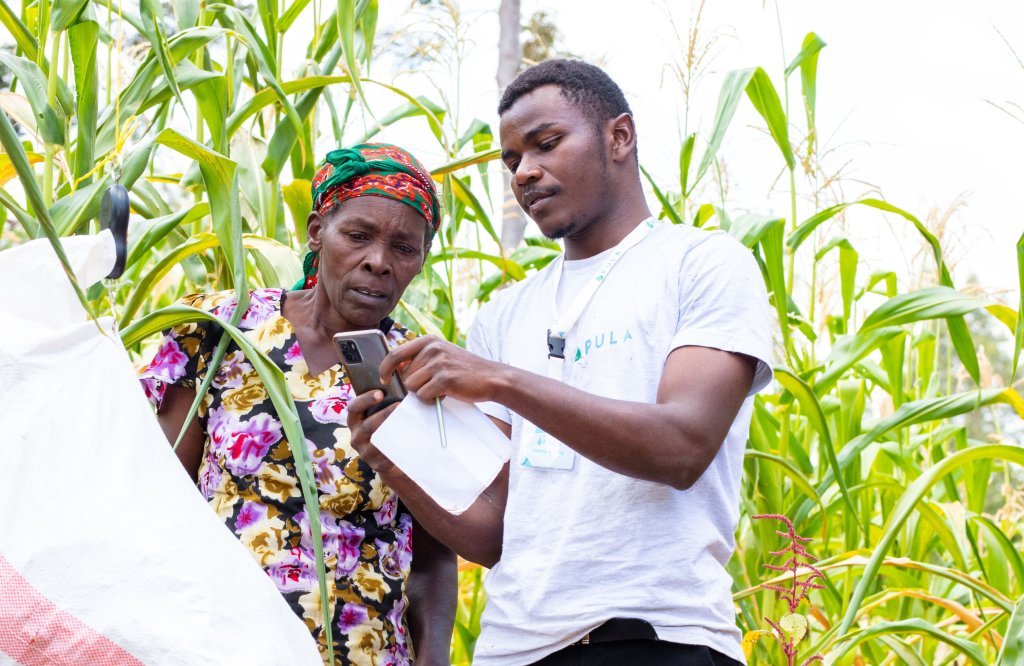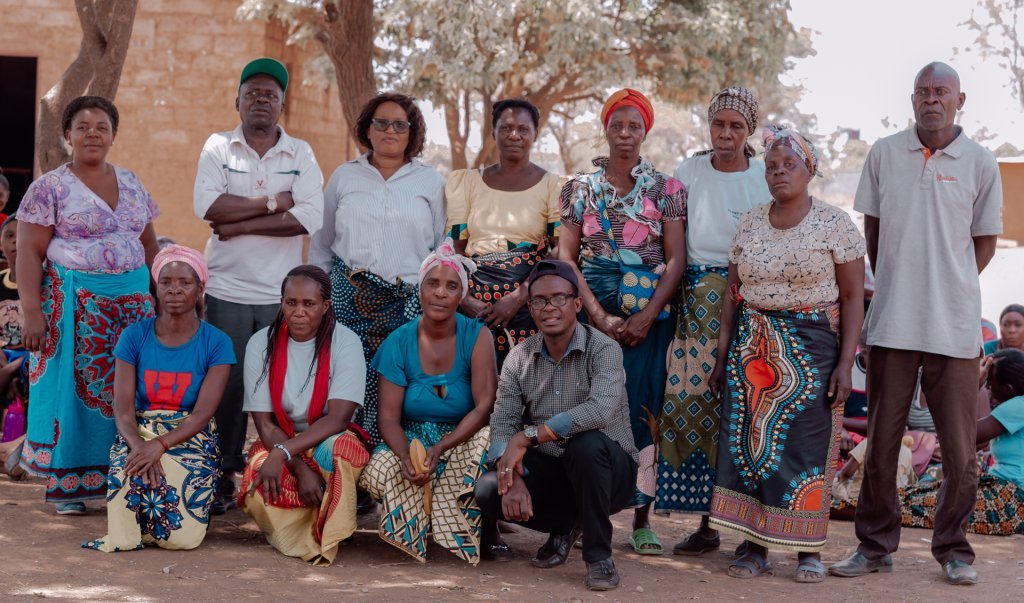Investing in climate insurance helps small businesses and farmers build resilience
Leveraging the success of its predecessor fund, launched in 2015, the InsuResilience Investment Fund II is a unique private equity fund that invests directly into the climate insurance value chain. Its aim is to create affordable climate insurance products for people and small- and medium-sized businesses in emerging markets where weather impacts are the most pronounced and least protected.
The fund, co-financed by NDF and managed by BlueOrchard, is operating in Africa, Asia, Latin America and the Caribbean, and has a strong focus on the agriculture sector. In this case, helping small farm holdings build climate resilience and reduce vulnerability to the economic, social and environmental shock brought on by extreme weather events.
“This is the first investment into the climate insurance sector for NDF,” says Program Manager, Isabel Leroux, who oversees the fund from the NDF side. NDF has invested USD 13.5 million with an additional USD 1 million in technical assistance.
“We see affordable climate insurance as a powerful way to boost resilience for small businesses and farm holdings in areas most vulnerable to climate change. But as a concessional investor it’s not easy to enter the insurance market,” Leroux says. “One way is to finance premiums, but a more sustainable approach is to invest in a fund that is investing in companies already active in the space, and contribute that way towards building new market mechanisms.”
Success in developing these mechanisms first hinges on educating insurance companies on the business value of climate insurance products. That means finding access to quality weather data and developing benchmark indices that help insurers put a price on risk. This can be especially challenging in emerging markets where climate insurance is still nascent. Then, once an affordable product is created, an equally important step is convincing individuals or small- and medium-sized business owners that they should actually buy it.
“Nobody likes insurance, nobody likes talking about it, and nobody really likes buying it, even when they really need it,” says Rose Goslinga, Co-Founder and President of Pula, one of the fund’s portfolio companies. “And yet insurance is the quiet foundation of modern agriculture.”
Pula, which means rain in Setswana, is an agricultural insurance and technology company headquartered in Switzerland with hubs in Nairobi, Lusaka and Lagos. They develop data-driven insurance products across Africa and Asia. Using large volumes of their own collected data, Pula does everything from pricing risk to calculating claims and loss assessment for small farm holdings.
Since the company’s launch nine years ago, Pula has insured 15 million farmers in 19 countries. The company has also grown its number of permanent staff from one to 120 and employs 1400 seasonal field agents.
While Goslinga describes herself as “a total insurance nerd,” Pula’s farmer customers are less obsessed. “Farmers don’t wake up in the morning and think, I must go out and buy some insurance,” Goslinga quips. “They don’t like buying insurance, but they do like the things that insurance enables.”
Bundling insurance works best
The key is to find ways to bundle insurance sales in with other products. These could be government lines of credit or agricultural inputs like fertilizer and seeds. One of Pula’s biggest partners at the moment is the government of Zambia. Since Pula’s entry into the Zambian market, penetration of crop insurance has spiked from around 3% to 60%, with six out of every 10 seed bags sold to farmers now sold together with insurance. When finding the right partnerships, the results become even better.
There are many other examples of insurance bundling from among the fund’s portfolio companies. Anne Jackermeier, Impact Manager at BlueOrchard, cites an insurance product designed for small shop owners in India. While the first fund focused on the agriculture sector, the strategy of the second fund has been extended to include urban settings.
“Often with this fund, people think only of farmers and agriculture. And it's true that's a huge focus,” Jackermeier says. “But if you think that half of the world's population lives in cities, it’s also important that we find solutions for people in urban settings.”
FinAGG has bundled credit with insurance in an innovative way by partnering with the private sector. The company’s core business is making working capital loans to small shop owners.
“This essentially means financing inventories of consumer products to help shops build their business,” Jackermeier says. However, weather-related disasters linked to climate change are a growing problem in India, with three out of four districts now considered hot spots for extreme flooding. “It only takes one extreme flood to destroy a shop’s inventory and the shop owner´s livelihood, impacting their ability to start over.”
To help mitigate this growing risk for themselves and their customers, FinnAGG hit on the idea of developing partnerships with some of the big brands in India. They now have more than 25 popular commercial brands who have agreed to subsidise inventory insurance premiums for their shopkeeper clients to go with the loans. Unlike government or donor subsidies, which may come and go with political waves, there is long-term potential for continuity in partnering with these stable brands, which are vested in the success of their shopkeeper clients. Premiums for shop owners can also be kept very low at around 1 US dollar, and can cover up to 1,250 US dollars’ worth of inventory.
“So, it's a credit risk mitigation tool for both FinnAGG, the lender, and for the anchor brands who sell products wholesale to the shops,” Jackermeier explains, “because it’s in their collective interest to protects the shop owners if their inventory is destroyed.” FinnAGG’s high-tech-enabled, fast delivery payouts also enable policy holders to repurchase inventory quickly and restore business continuity.

Pula's clients participating in harvest measurement process. Photo: Pula for BlueOrchard
Enhancing resilience through technology
As well as speeding up processes, smart use of technology can significantly reduce the number of human resources needed to deliver climate insurance. For example, crop insurance in the African countries where Pula operates has traditionally relied on in-person farm visits. By using technology to automate data gathering and dispense payouts, insurance companies no longer need as many boots on the ground, which can radically bring down the cost of premiums.
Pula has developed an end-to-end approach to leveraging technology, first in how they price the risk, using satellite data to understand how the climate in a particular area is working, then sending in teams of digitized field agents to measure and benchmark the crop yields. These agents, or ‘eyes on the ground,’ are often sons and daughters of small farmers.
“They all have smartphones, they’ve grown up with crop harvesting, and now they’re literally harvesting our data for us,” says Goslinga. If the crop yield is bad as measured through Pula’s agent network, then all the farmers in that area who are insured will get paid. In this case if a harvest is normally three metric tons and in a bad year, farmers harvest an average one metric ton, then the amount paid out will be based on that.
This practice of creating a benchmark index to represent all farms in a given area is an example of parametric insurance, of which Pula is a pioneer. While Pula mostly builds crop yield indices, other types of parametric insurance indicators can be rainfall in areas with extreme drought or wind speed in areas with hurricane risk. Insurance payouts based on these can also be dispensed more or less in real time through cellular networks, making the whole process easy for policy holders, with no complicated claim forms to submit. “This comes back to one of the fund’s core focus areas of reducing product complexity,” Jackermeier says.
Designing insurance for women and girls
Aside from non-complexity, another important challenge in designing parametric insurance products is ensuring that the yield indices are representative of the people the fund wants to reach. Gender intentionality in designing for women and girls is one focus area that BlueOrchard is working on with partners like NDF.
It is crucial to look at gender when designing insurance, so women and girls can benefit equally in different continents, where this is not a given. BlueOrchard studies whether there is a difference in where women and men are farming and culturally speaking whether they farm different crops.
“If you design an insurance product based on data from crops farmed by men, in areas predominantly farmed on by men, the indices may not work as well for women,” Jackermeier points out.
At Pula, 40% of customers are women. “If you want to reach more women in agriculture and you really want to support them, you've got to meet them where you find them, with their crops and then promote those,” Goslinga says. For example, in Nigeria, the company insures a large population of women growing ginger root. They already know their crop well but many were in need of an extra line of credit. “Whether it’s a women or a man farmer, they are all looking at risk,” Goslinga says. So as a solution for Nigerian women who farm ginger, Pula suggested insurance to go with their loans.
Goslinga sees a lot of dignity in farmers being self-sufficient and able to sort out their own problems. “Even though they’re at the mercy of the weather, the insurance gives them the dignity to take that risk into their own hands.”
The basic tenets of the InsuResilience Investment Fund II align perfectly with NDF’s strategic focus of leveraging technology for climate resilience in agriculture to support vulnerable regions. “The fund’s approach also exemplifies the kind of innovative mechanisms we prioritise at NDF,” Leroux concludes, “that can really scale up climate adaptation and resilience solutions for maximum impact.”

Photo: Pula for BlueOrchard
